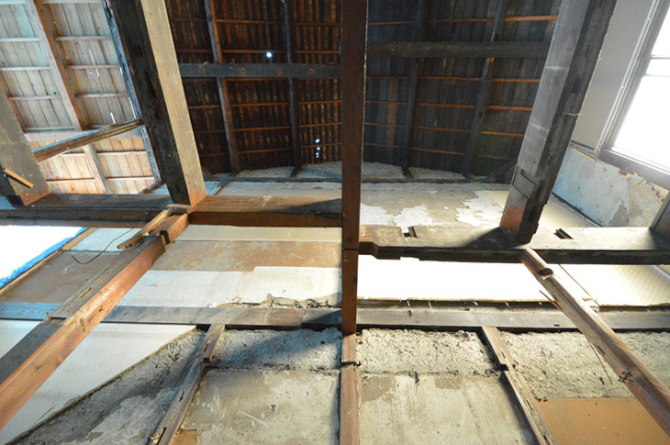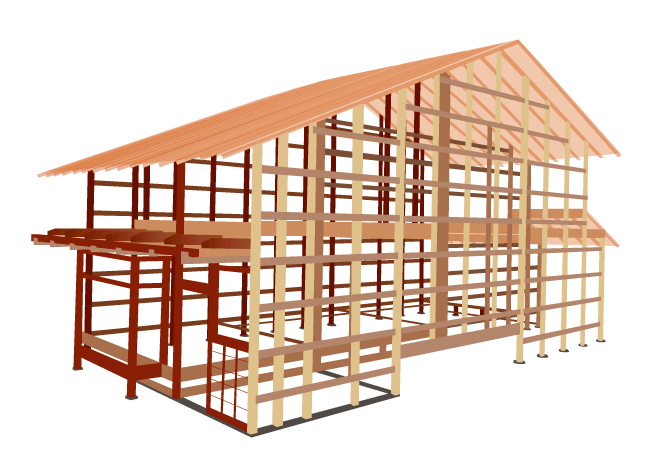Collaboration
Joint research initiative with the Kyoto Institute of Technology

Hachise is currently implementing a joint industry-academia research project with the Kyoto Institute of Technology on the Kyo-machiya traditional wooden building structure. This joint research includes load testing conducted on walls under a specified set of conditions, followed by performance assessment.
Boosting technologies and know-how used in Kyo-machiya repair

Kyo-machiya are built using a traditional post-and-beam system for wooden structures (referred to below simply as “traditional construction method”) combining a specified set of wooden materials to construct the frame. Traditional construction methods have been passed down through generations since prior to the development of modern construction technologies. This methodology differs greatly in structure from the prevailing so-called “conventional” construction methodology; the renovation process therefore requires the highly specialized know-how and technologies pertaining to traditional construction.

As of around 2005, Hachise’s primary business has been the renovation and sales of traditional Kyoto wooden machiya. Due to the fact that Kyo-machiya were built prior to World War II, there remain concerns about their durability and earthquake resistance due to the sheer age of the buildings. Therefore, renovation by Hachise is not only about refurbishment for looks but also about making improvements to all aspects of the frame construction where necessary, including the pillars, beams, walls, foundation, roof, etc. We therefore consider the optimal means of repairing and reinforcing these buildings to ensure that people can live in them comfortably —and with peace of mind—indefinitely.

In 2010, as a means of vibration control in earthquake-resistant construction, Hachise developed its own earthquake-proofing methodology geared toward Kyo-machiya in particular. Based on the company’s research and experience, Hachise has established its own construction standards focusing on the structural attributes of traditional construction method in order to manage day-to-day renovations effectively. After more than a decade of working with Kyo-machiya, we strive to further develop the technologies and know-how needed to pass on the Kyo-machiya to future generations in an even better state than they currently are in. By way of our research, the goal of this project is to keep as many Kyo-machiya standing as possible.